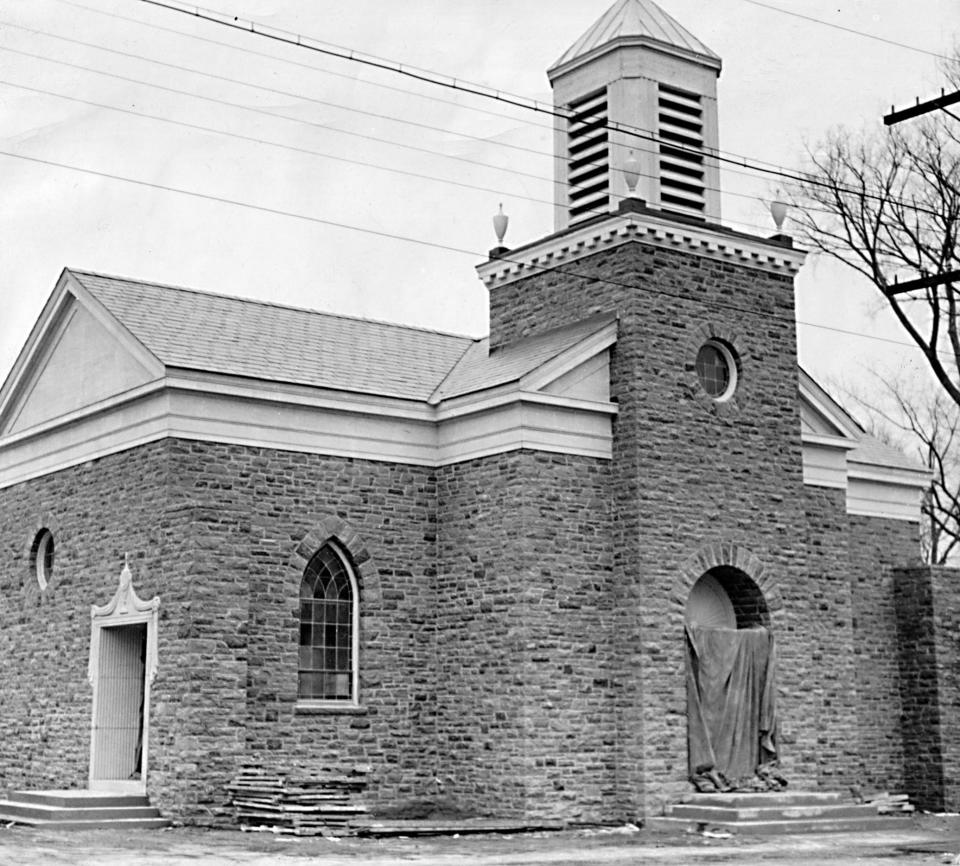How the 78-mile Utica and Schenectady Railroad began: This week in Mohawk Valley history
1833, 190 years ago
All aboard!
Alfred Munson, Nicholas Devereux and Henry Seymour (Horatio's father) are enthusiastic about any project that promotes the welfare and prosperity of Utica. So, it is not surprising that they are delighted to learn that on April 29, the Utica and Schenectady Railroad Company will be incorporated by the state. The three Uticans quickly agree to get involved in its construction.
It will take about three years to build, will be 78 miles long (reportedly one of the longest railroads in the world at the time) and extend from State Street in Schenectady (population 6,200) to behind Bagg's Hotel on Genesee Street in Utica (population 10,000).
It will own 12 steam-powered locomotives built by the Baldwin Locomotive Works in Philadelphia. They will pull 50 passenger cars — each seating 24 — and 50 passenger wagons for the large number of immigrants expected to use the railroad to head west. The state does not want the railroad to compete with the freight business on the Erie Canal — which has become a cash cow for the state treasury — so the railroad will be for passengers only. Fares will be four cents a mile. Westbound trains will run on the north track and eastbound trains on the south track. The trains will travel between 12 and 20 miles per hour. (Munson, Devereux and Seymour later were elected to the railroad's 13-member board of directors and Munson became vice president. Note: The Utica & Mohawk Valley Chapter of the National Railway Historical Society is interested in all apects of railroading and meets monthly in Zion Lutheran Church in New Hartford.)

1923, 100 years ago
Planting trees
It is Arbor Day and in Utica eighth graders plant 12,000 Norway maple trees in Roscoe Conkling Park. The seedlings are donated by the Fraser Department Store in downtown Utica.
1948, 75 years ago
Stadium sites
The city of Utica plans to build a 7,000-seat stadium at a cost of $600,000. Three sites are being considered — on state-owned land at Noyes and York streets, on a plot on Culver Avenue near the State Armory or in an area in North Utica at North Genesee Street and Auert Avenue. (The stadium never was built.)
More: Theodore Roosevelt's road to the presidency begins in Utica
More: How Utica, NY got its name: This week in Mohawk Valley history
More: Western NY university's story begins with Utica businessman: Mohawk Valley history
1973, 50 years ago
Book published
Raymond Simon, professor of public relations at Utica College, is the author of a new book titled "Public Relations Management: Cases and Simulations."
New officers for the Utica School for Practical Nurses' Class of 1973 are: Debbie Lopiccolo, president; Lois Dienhoffer, vice president; Judith Nicknish, treasurer, and Lorraine Pisano, secretary.
Top high school cross country runners in Utica include Peter Dunn of Notre Dame, Bruce Hofstetter of Thomas R. Proctor High, Gene Falvo of Utica Free Academy and Dan Phelps of John F. Kennedy High.
1998, 25 years ago
Rome budget
Rome's Board of Education adopts a $62.3 million budget, $475,000 more than last year's spending plan. Board members will announce a tax rate later. Currently, the tax rate is $18.50 per $1,000 assessed valuation.
The B Sharp Musical Club and the Etude Club announce scholarship winners. They include: Erin Fuller, Torrey Baldwin, Qui Vo, Jermaine Hill, Kristen Kibling, David Kolb, Kathleen Horn, Geoffrey Robson, William Knuth, Katherine Wilcox, Anne Leone, Anne Marie Moffitt and Pamela Goodison.
Ronald P. Cerminaro is elected chairman of the board of the Utica Transit Authority. Other officers include: Norton Stanton, vice chairman; and Vincent Dannes, secretary. Board members are: Mary Ann Crane, Joseph Ehlingher, Cornell Maye, Christine Doyle and William Williams.
In high school baseball, Notre Dame defeats Oneida, 7-3, behind the pitching of Jason Barone and hitting of Sal Paladino, Kevin Roberts, Marc Spaziani, Ed Lorek and Tom Carcone.
2013, 10 years ago
Teachers retire
Several Utica school teachers agree to a $14,000 retirement incentive. They include: Marytheresa Balutis (43 years service), Michelene Husar (16 years), Ellin Irwin (30 years), Brian King (13), Diane Nill (24), Mary Ann Nobile (15), Mary Samuels (33), Michelle Saunders (22), Dorothy Schnier (27), Monique Sorrell (14), Sally Swierczek (26), Christine Tresoline (26) and Susan Young (21).
In high school baseball, Oriskany ends New York Mills' 46-game win streak by winning 1-0. Winner Austin Smith allows only four hits and strikes out eight while outdueling Zach Vennaro, who allows five hits and strikes out five. Alex Liddy singles and scores the game's only run on a Nick Springer double.
Courtney Muhammad, a minister with the Nation of Islam, is named "Mother Lavender humanitarian of the year" by the Cornhill Community for Change. Muhammad has spent 14 years as a prison reform minister for the state Department of Corrections "teaching, educating and guiding." Ellen Elizabeth Lavender was born in slavery in Macon, Georgia, in about 1850. She eventually moved to Utica and spent her life helping those in need. She was well known for her New Year's Day dinners for the poor.
Trivia quiz
Who was the first wife of a president of the United States to vote? (a) Helen Herron Taft, (b) Lou Henry Hoover, (c) Florence Kling DeWolfe Harding or (d) Ellen Axon Wilson. (Answer will appear here next week.)
Answer to last week's question: On Nov. 14, 1906, President Theodore Roosevelt arrived in Panama aboard the USS Lexington. He was the first president in history to visit a foreign country while in office. He was in Panama to inspect the building of the Panama Canal.
This Week in History is researched and written by Frank Tomaino. E-mail him at ftomaino221@gmail.com.
This article originally appeared on Observer-Dispatch: How 78-mile Utica to Schenectady railroad began: Mohawk Valley history

